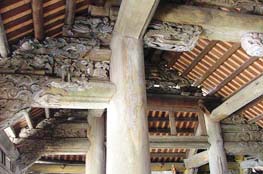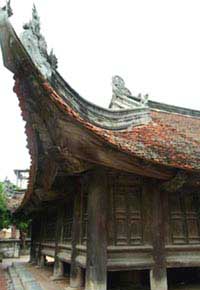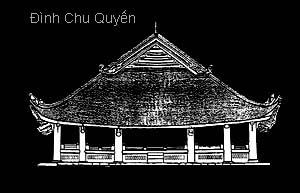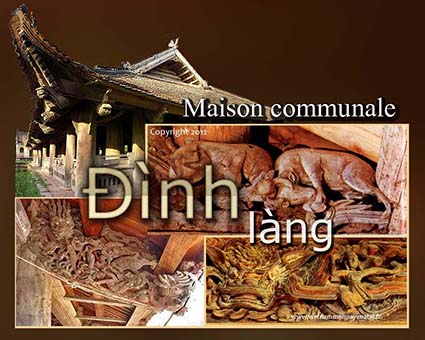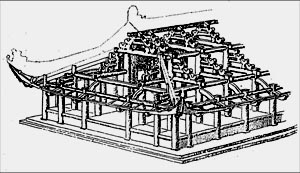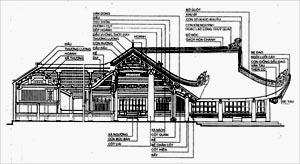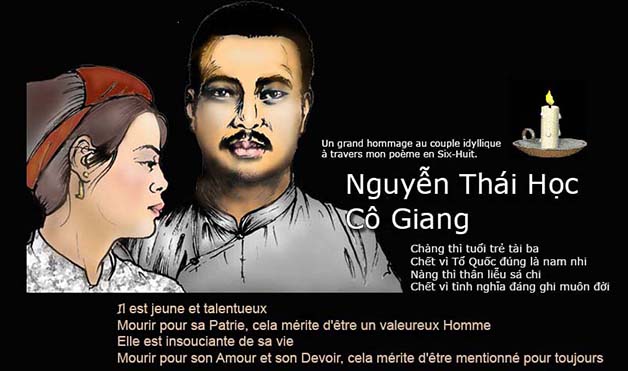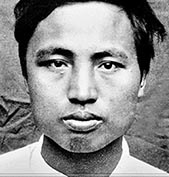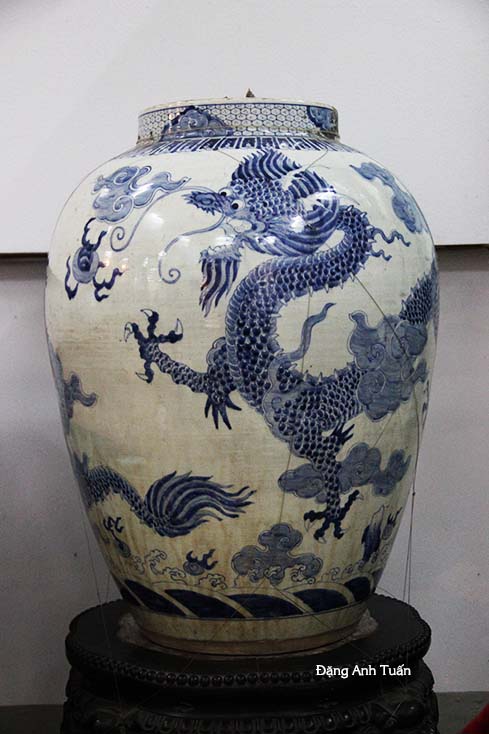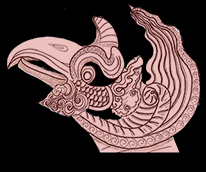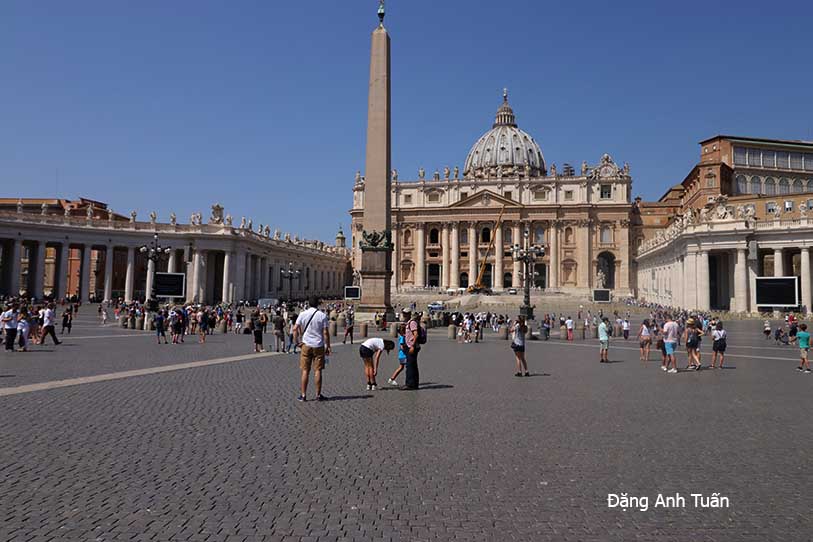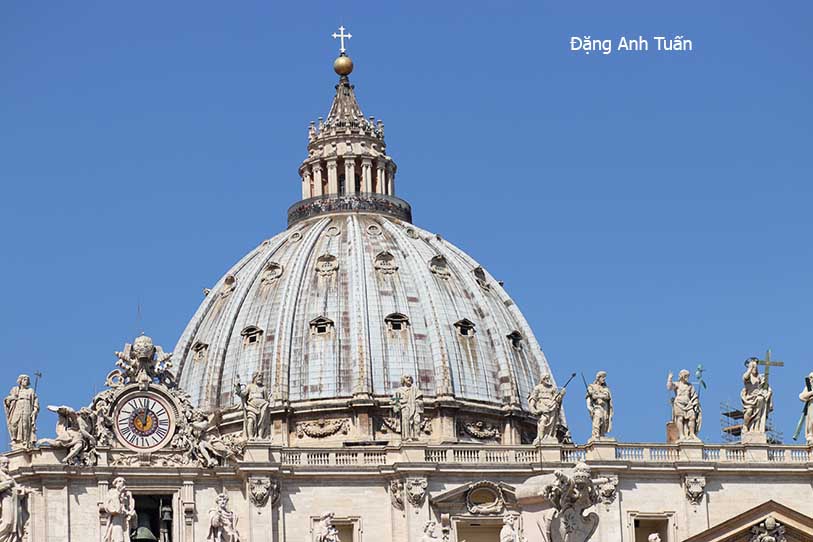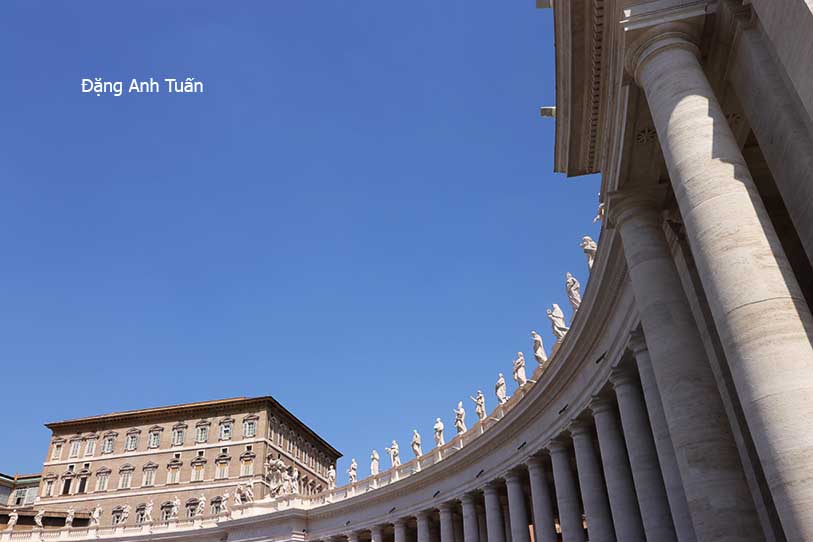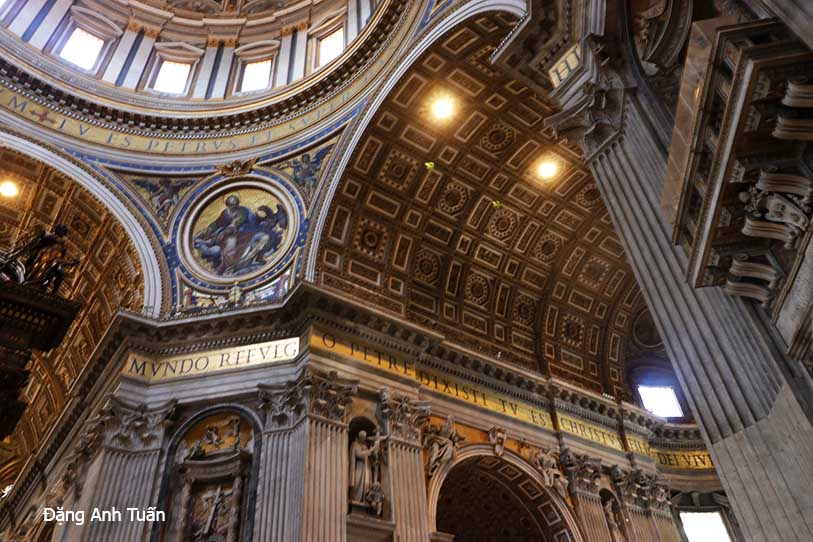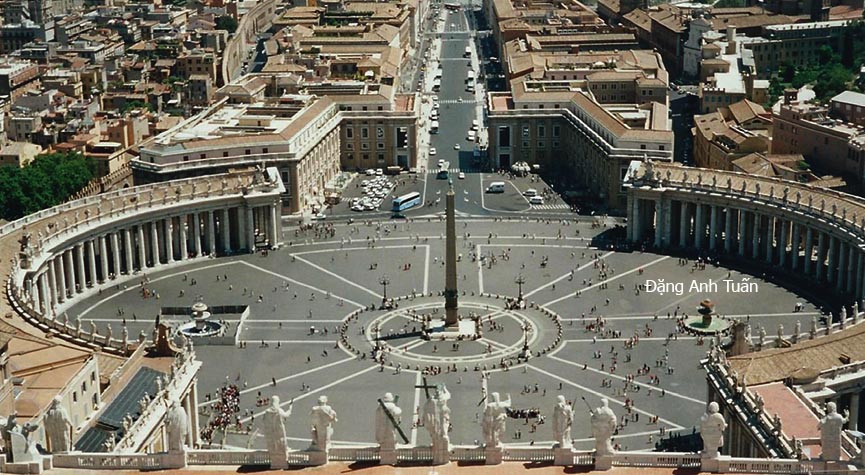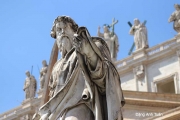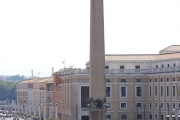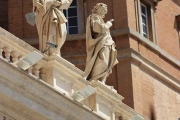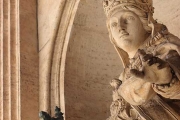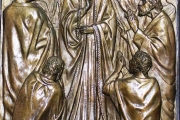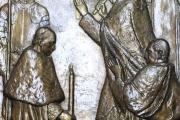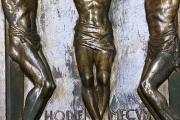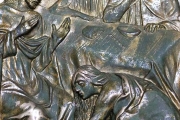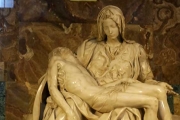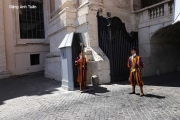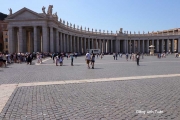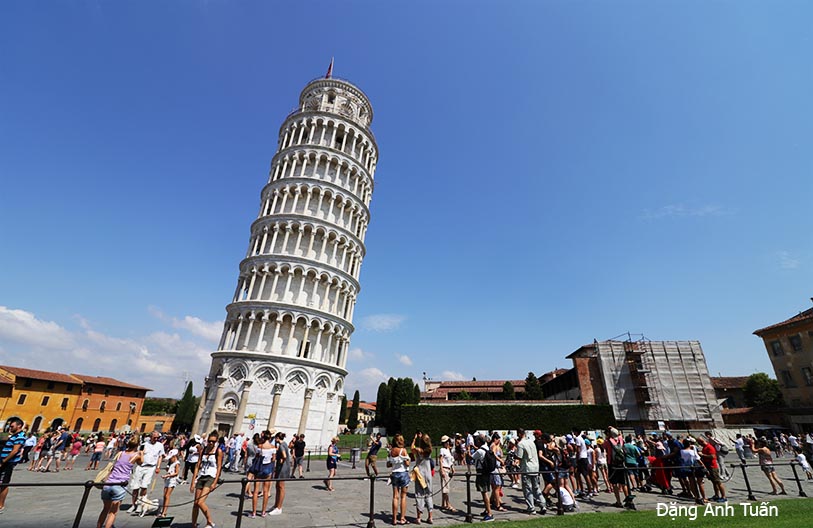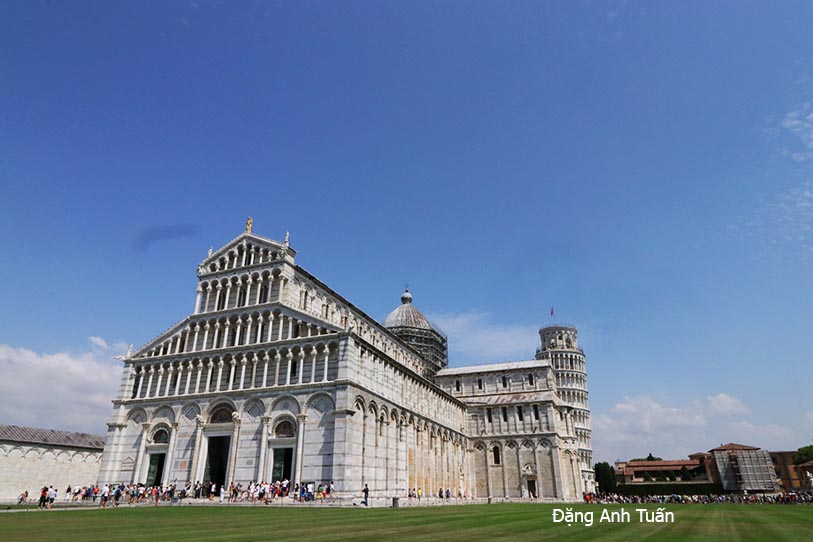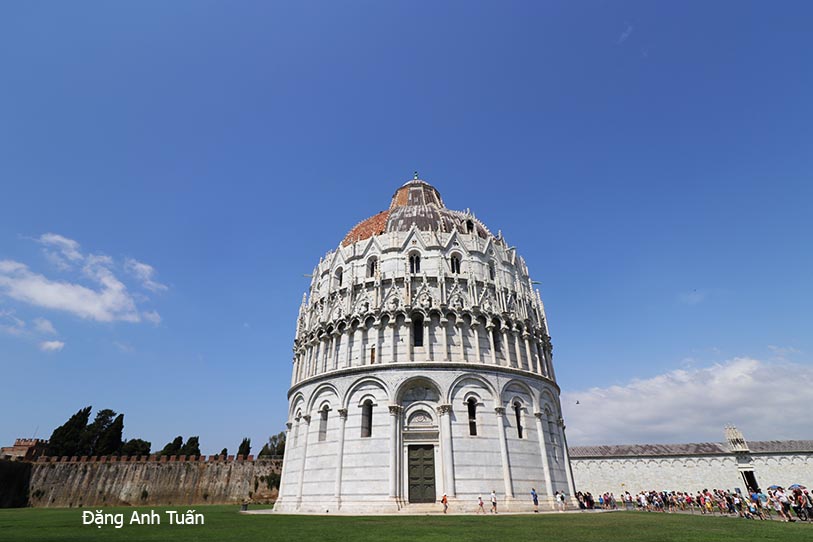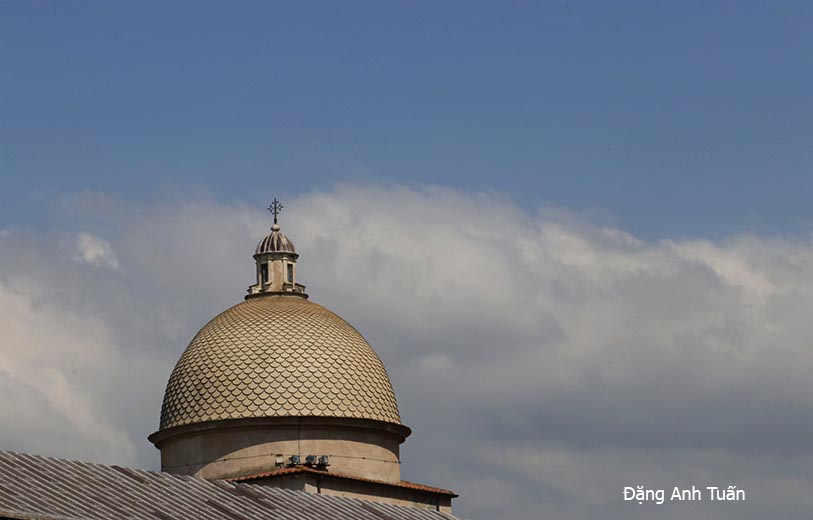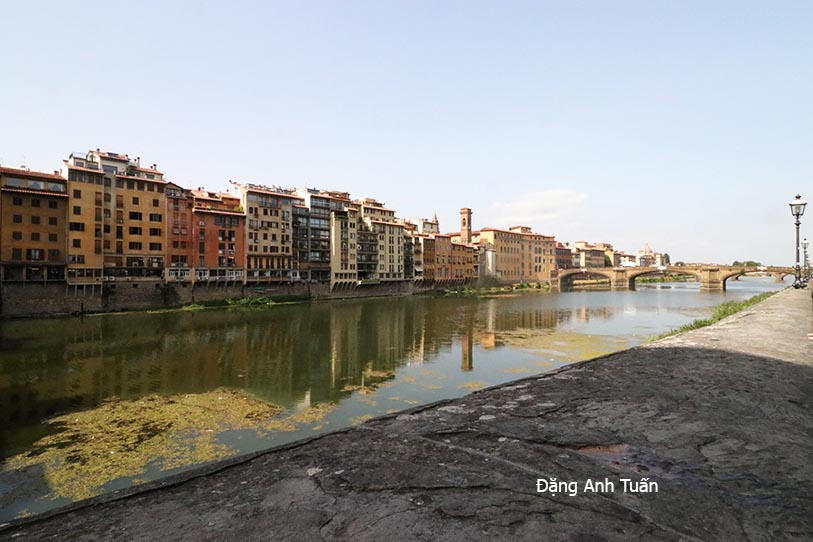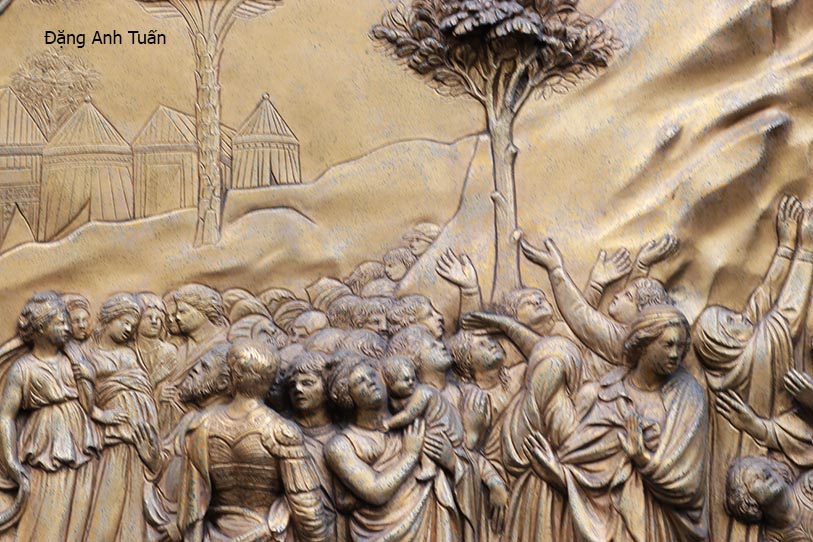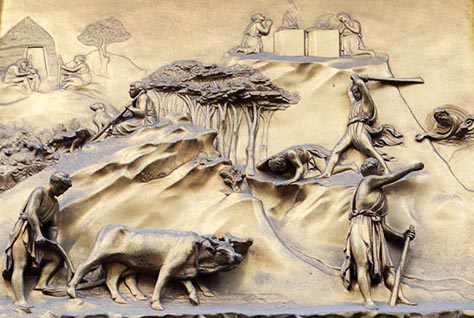Đình Làng (Part 3)
Armature ( Cấu tạo vì kèo )
In addition to the ceremonies scheduled in the year in honor of the tutelary genius, villagers attach great importance to anniversaries of his birth and death. But there are also other occasional sacrifices caused often by a marriage, an appointment, a promotion or a old or siver wedding (khao lão). This allows you to give rise to feasts in the village and allows you to celebrate in large pump the cult in the tutelary genius. The latter may be a man or a woman. It is easy to identify this genius at the time of the procession. For the genius-man, there is always the presence of a horse in red (ngựa hồng) or white ( ngựa bạch) laquered wood. This one is of natural size and mounted on a wooden rectangular plate fitted with castors. The latter is richly harnessed and it is supposed to bring the genius soul. In the case where the genius is a woman, this horse is replaced by the palanquin in red hemp (võng đào) suspended from the beam having the ends carved with dragon head and based on two easels in the form of three crossed sticks.
Mái cong làng Ðình Bảng
For the duration of the feast, one sacrifices to the tutelary genius with solemnity by moving its char ( kiệu) accompanied by a large number of culte objects, parade weapons, dais (tán) and pennants (cờ), from the communal house (đình) to the his place of residence (nghè) (1) or from the village to another allied village in the case where these ones are united by the cult of the same genius and by organizing multiple entertainment: fighting of cocks, buffaloes and birds, chess games with human pawns, flat hand wrestling etc.
There is also a important rite which recalls the significant characteristics of genius life. Known as the « hèm » in Vietnamese and kept secret, it is always celebrated during the night for geniuses who have not done an honorable act (genius thief, genius with fists, wast collector genius etc … ).. By contrast, it is celebrated in the great day for the geniuses with a quality or an act of bravery. One avoids to pronounce also the name of the genius during the rite by modifying the pronunciation or by substituting a synonym. This is the case of genius Linh Lang for example. We are obliged to tell « khoai dây » instead « khoai lang » (potatoes), « thầy lương » for « thầy lang » (doctor) etc. This singular rite is one of the essential features of communal cults. The negligence of this rite could jeopardize the prosperity of the village.
Its construction is always operated according to a well-defined layout plan identifiable by some Chinese characters Nhất, Nhị, Tam, Ðinh, Công, Vương etc. A communal house (đình) who stands alone with a rectangular main building (đại đình) evokes the character « Nhất ». This is the case of « đình » Tây Ðằng.By contrast, we are led to recognize the character Nhị by adding to the main building a second building (tiền tế) (or building reserved for sacrifices). This one is parallel to the first building and preceding it in the new layout. This is the case of the communal house Liên Hiệp. It is rare to find the character Tam in the construction of communal house. In a general way, the « đình » is frequently encountered in the shape of the character Công.
The posterior building Hậu Cung is connected to the main building by a small corridor or a small court (Ống muống) . This is the case of the communal house Đình Bảng, Mộng Phụ. For the character Vương, it is sufficient to connect three buildings (Hậu Cung, Đại Đình, Tiền Tế) with two corridors (Ống muống). It is in this last building « Tiền Tế » where the official ceremony for tutelary genius is performed by notables wearing a blue suit during the feast days. READING MORE
Palanquin in red hemp (Đình Cổ Loa)
(1) ghè: Place of residence of the genius often located at the entrance of the village. At the time of the feast, invited the genius is invited to join the communal house « đình ». It is brought back to its « ghè » when the feast is terminated.
Bibliographie:
Le Ðình, maison communale du Viêt Nam.
Hà Văn Tấn, Nguyễn Văn Kự,
Editions Thế Giới, 2001

